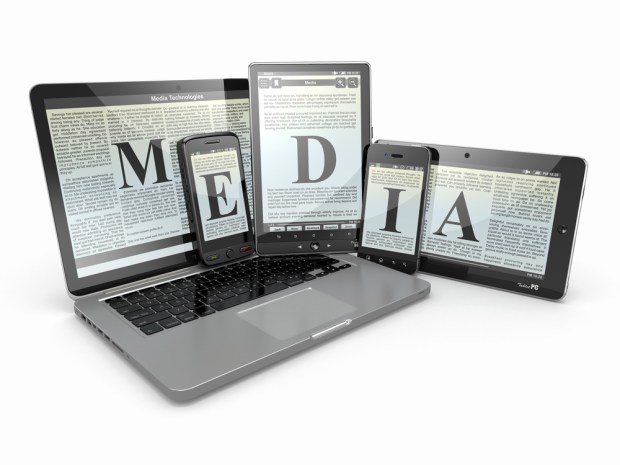Ad Agencies Hit By “Digital Disruption,” Bits And Bytes Take Bites From Middlemen

London-based multinational advertising and public relations company WPP’s sneeze shows a flu spreading across the advertising sector, and the malaise is borne in part by bits and bytes.
In fact, it looks like the traditional middlemen — the big advertising agencies like WPP, Omnicom and a host of others — may be getting pushed to the wayside. Making way, of course, for big digital ad players such as Facebook, Google and Amazon.
WPP’s issues and warnings are only the latest dents to show up on the ad agency landscape. The company’s shares slid 10 percent on Wednesday, and management said 2017 may be the worst annum for the sector in a decade.
Those warnings came from Sir Martin Sorrell, CEO of WPP, who cut 2017 growth targets for the firm. The culprits include a slip in advertising spend by consumer goods companies, especially in North America, and also a specific callout to “digital disruption.”
And the malaise tied to those reasons are sector-wide, according to Sorrell. Companies are pulling back on ad spend in general, but looking to funnel more funds toward the digital disruption — meaning no one is being spared.
Sorrell’s remarks from a conference call to the investment community after earnings were released were quoted in a recent Telegraph article.
“If you look at the results, [and] five of the top six have reported, all of the groups have seen a slowdown in top line growth,” Sorrell said. “Look at packaged (consumer) goods. Any growth they’re getting is from price, very little is from volume. Very few clients are increasing spend and that’s a problem.”
The turndown may not have legs, though, as he also said, “It will turn. Companies are saying they’ll start picking up spending soon.” Nonetheless, the pressures remain a “big wakeup call,” according to Sorrell.
Digital may hold disruption, but it also holds promise. Sorrell acknowledged that “we understand our consumers are changing their consumption of media.” As such, WPP will push its data efforts in gathering information about those same consumers. The Wall Street Journal noted additional pressure is coming from digital buying groups and “bespoke brand content” being delivered by media companies.
Opportunity may be in the offing, eventually. But it will take time and, perhaps, even an uphill climb for the likes of WPP who help create ad content and provide services that help place content on TV, print and digital. In this digital-focused age, so many people are bypassing the creative offloading to do that all themselves.
Consider the inroads made by companies such as Facebook and by Google. The fact remains they are not only changing the way advertising is consumed but also the way it is created, with buzz feeding upon buzz and links bringing people to videos that tout, or pan, various products or services. Those wholesale changes are showing up with weight and speed in terms of billions of dollars and viewers. Brands don’t need middlemen to find eyeballs because Google and Facebook already have them, and it is easier — and cheaper — to start and end there.
Facebook, in its latest results, made 87 percent of its top line on ads, and 98 percent was the print for Facebook. Ad revenue at Google in the latest period was $23 billion, and for Facebook the number was $9.3 billion. Fortune, citing eMarketer, has noted this duo is likely to take half of all digital advertising across the globe, and a bit more (60 percent) in the United States.
The Facebook and Google lock is a strong one as there are no other digital players in the States with even close to that aforementioned market share. In fact, none have more than a 5 percent share of digital ads. Amazon got notice on the call from Sorrell, as he said he estimates the eCommerce giant earned $2.5 billion from digital advertising efforts.
In the meantime, and turning again to sector-wide shifts, advertising of all sorts is getting greater scrutiny amid larger consumer packaged goods (CPG) companies. In one instance, as noted by the WSJ, Cincinnati-based consumer goods corporation P&G, the biggest advertiser of all, has slashed digital ad spending by $100 million as of the latest quarter, and that comes from getting rid of what the firm has called “ineffective digital advertising” — a reduction in fees and costs tied to advertising efforts. It has found “targeting” to be limiting and thus ineffective.
On Facebook and Google, though, it finds a wider assortment of serendipitous eyeballs willing to buy. Other firms are also looking to social media for brand promotion.
But, all in all, according to the WSJ article, digital advertising is still showing growth, with 17 percent increases estimated to occur this year alone on a global basis, translating to almost $224 billion. Perhaps not easy numbers for WPP and its brethren to swallow.